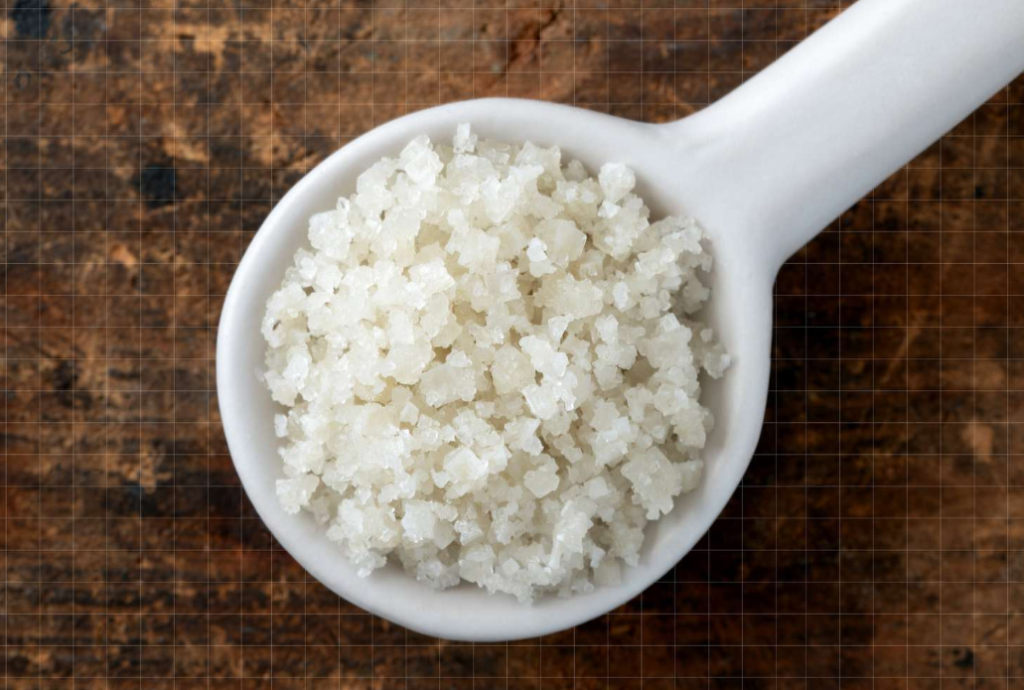Celtic salt, a coarse, grey sea salt harvested off the coast of France, has garnered a reputation as a health elixir. Proponents tout its mineral richness and claim it can lower blood pressure, improve digestion, and even boost immunity.
But before you ditch your regular iodized salt for this trendy condiment, let’s separate fact from fancy and explore whether is celtic salt good for high blood pressure or not.
Understanding High Blood Pressure
High blood pressure, or hypertension, affects nearly one in three adults globally. It’s a silent killer, often showing no symptoms until it causes serious health problems like heart disease, stroke, and kidney failure. While genetics and lifestyle factors play a significant role, dietary sodium intake is a major culprit.
Sodium: The Double-Edged Sword
Sodium, the primary component of table salt, plays a vital role in nerve and muscle function. However, excessive sodium intake has been consistently linked to high blood pressure. This occurs through various mechanisms, including:
- Fluid retention: Excess sodium attracts and retains water in the bloodstream, increasing blood volume and pressure.
- Vascular stiffness: Sodium can stiffen blood vessel walls, leading to decreased elasticity and increased resistance to blood flow.
- Hormonal imbalances: Sodium intake can trigger the release of hormones like aldosterone, which further elevate blood pressure.
Celtic Salt: A Lower Sodium Contender?
Compared to regular table salt, Celtic salt boasts a slightly lower sodium content. A teaspoon of Celtic salt contains roughly 420mg of sodium, while regular table salt packs a punch with 625mg. This seemingly small difference can translate to a modest reduction in total daily sodium intake, potentially offering some advantages.

However, it’s crucial to remember that even Celtic salt can contribute to high blood pressure if consumed in excess. Moderation remains key, regardless of the salt type. The American Heart Association’s recommended daily sodium intake of 2,300mg for healthy adults and 1,500mg for individuals with hypertension or prehypertension should still be the guiding principle.
READ: How to Use Sejoy Blood Pressure Monitor?
Minerals: Celtic Salt’s Secret Weapon?
One of Celtic salt’s unique selling points is its rich mineral profile. It contains a wider range of minerals compared to regular table salt, including:
- Potassium: A natural vasodilator, potassium helps counteract the vasoconstricting effects of sodium and can therefore promote lower blood pressure.
- Magnesium: Plays a crucial role in regulating blood pressure and muscle function. Deficiencies in magnesium have been linked to increased blood pressure.
- Calcium: Contributes to overall cardiovascular health and may indirectly influence blood pressure by strengthening bones and reducing the risk of hypertension-related complications.
While these minerals undoubtedly offer health benefits, their impact on blood pressure remains a subject of ongoing research. Studies exploring the isolated effects of specific minerals on blood pressure are challenging due to the complex interplay of dietary factors and individual predispositions.
READ: Can I Take Golo with High Blood Pressure?
Beyond the Salt Shaker
Focusing solely on salt is a narrow approach to managing high blood pressure. A comprehensive strategy should encompass various lifestyle modifications:

Dietary Adjustments
- Limit processed foods: Processed foods are often loaded with sodium, unhealthy fats, and added sugars, all of which contribute to high blood pressure. Opt for fresh, whole foods like fruits, vegetables, whole grains, and lean protein.
- Reduce sugary drinks: Sugar-sweetened beverages can contribute to weight gain and elevate blood pressure. Choose water, unsweetened tea, or black coffee instead.
- Minimize saturated and trans fats: These unhealthy fats can stiffen blood vessels and increase your risk of heart disease, which is often associated with high blood pressure. Choose healthy fats like olive oil, avocados, and nuts.
Lifestyle Habits
- Maintain a healthy weight: Excess weight puts additional strain on your heart and blood vessels, leading to higher blood pressure. Aim for a healthy weight through a balanced diet and regular exercise.
- Engage in regular physical activity: Aim for at least 150 minutes of moderate-intensity exercise or 75 minutes of vigorous-intensity exercise per week. Physical activity helps lower blood pressure, improve circulation, and strengthen your heart.
- Manage stress: Chronic stress can trigger the release of hormones that elevate blood pressure. Practice stress-reduction techniques like meditation, yoga, or deep breathing to manage stress effectively.
- Don’t smoke: Smoking is a major risk factor for high blood pressure and heart disease. Quitting smoking is one of the most effective ways to improve your cardiovascular health.
Remember: Consulting your doctor is crucial before making any significant dietary or lifestyle changes, especially if you have pre-existing health conditions like hypertension.
READ: Can Sinus and Ear Infections Cause High Blood Pressure?
Debunking Myths and Misconceptions
Celtic salt’s journey from a gourmet kitchen staple to a potential health hero has been paved with both intrigue and skepticism. It’s vital to navigate the hype surrounding this trendy condiment by debunking some common myths and misconceptions:

Myth #1: Celtic Salt Cures High Blood Pressure
There’s no magic bullet for curing high blood pressure, and unfortunately, Celtic salt doesn’t hold that title. While its slightly lower sodium content and beneficial minerals offer potential advantages, it still contains sodium and can contribute to high blood pressure if consumed in excess. Moderation and a holistic approach focused on diet, exercise, and stress management are essential for effective blood pressure control.
Myth #2: Celtic Salt is Devoid of Iodine
Iodine is a crucial mineral for thyroid function and proper brain development. Regular table salt is fortified with iodine, making it an important source of this essential nutrient. Celtic salt, on the other hand, lacks iodine. Therefore, relying solely on Celtic salt could lead to iodine deficiency, especially for individuals with high iodine needs like pregnant women and children. Opting for iodized salt alongside mindful Celtic salt consumption ensures you reap the benefits of both while avoiding potential iodine deficiencies.
Myth #3: Celtic Salt Detoxifies the Body
Claims of Celtic salt’s magical detoxification powers remain unsubstantiated by scientific evidence. While the human body possesses inherent detoxification pathways through the liver and kidneys, there’s no proof that specific foods like Celtic salt significantly enhance these processes. Detox diets and regimens promoting miracle ingredients often lack scientific backing and may even be harmful. Focusing on a balanced diet, adequate hydration, and regular exercise remain the cornerstones of optimal body detoxification.
READ:
Can You Take Muscle Relaxers with Blood Pressure Medication?
Does Lipo-Flavonoids Affect Your Blood Pressure?
Myth #4: Celtic Salt Tastes Better, Therefore it’s Healthier
Taste preferences are subjective, and while many find Celtic salt’s earthy flavor appealing, it doesn’t automatically translate to a health advantage. The health benefits of Celtic salt lie in its slightly lower sodium content and potentially beneficial mineral profile, not solely in its taste. Remember, even “healthy” tasting foods can be consumed in excess, negating any potential benefits. Moderation and mindful eating practices are paramount, regardless of the salt’s flavor profile.
Myth #5: Celtic Salt is the Only “Natural” Salt Option
The term “natural” is often misused in the food industry. All salts originate from nature, whether sea salt, Himalayan pink salt, or regular table salt.
While Celtic salt is minimally processed and retains some trace minerals, it’s crucial to focus on overall dietary patterns and sodium intake rather than specific salt labels. Choosing fresh, whole foods and practicing mindful moderation with any type of salt is key to healthy living.
By debunking these misconceptions, we can approach Celtic salt with a grounded perspective, appreciating its potential benefits while acknowledging its limitations. Remember, it’s just one piece of the puzzle in managing your health and well-being.
A holistic approach encompassing diet, exercise, stress management, and regular consultations with your healthcare provider is the recipe for success in maintaining optimal blood pressure and overall health.
RECOMMENDED ARTICLES:
Does Prozac Raise Blood Pressure?
Does Super Beta Prostate Raise Blood Pressure?
Does Heparin Lower Blood Pressure?
Conclusion
Celtic salt may offer a slightly healthier alternative to regular table salt, but it’s not a magic bullet for high blood pressure. Moderation is key, and a holistic approach to managing your diet, lifestyle, and stress levels is essential for optimal blood pressure control. Always consult your doctor for personalized guidance on managing your blood pressure and making healthy dietary choices.
Resources & References
- American Heart Association: https://www.heart.org/en/health-topics/high-blood-pressure
- National Institutes of Health: https://www.nhlbi.nih.gov/health-topics/high-blood-pressure/health-professional-information
- Mayo Clinic: https://www.mayoclinic.org/diseases-conditions/high-blood-pressure/diagnosis-treatment/drc-20373417?p=1
- World Health Organization: https://www.who.int/news-room/fact-sheets/detail/hypertension
FAQs – Celtic Salt & High Blood Pressure
Does Celtic salt lower blood pressure?
While Celtic salt contains slightly less sodium than regular table salt, there’s no conclusive evidence to suggest it definitively lowers blood pressure. Some small studies show potential benefits, but larger, controlled trials are needed for solid confirmation. Moderation remains key regardless of the salt type.
Is Celtic salt healthier than regular table salt for high blood pressure?
Celtic salt’s lower sodium content and broader mineral profile offer potential advantages, but it’s still salt and can contribute to high blood pressure if consumed in excess. Consider it a healthier alternative, not a magic bullet. Remember, a holistic approach to managing blood pressure is crucial.
Does Celtic salt contain iodine?
No, unlike regular table salt, Celtic salt naturally lacks iodine, an essential mineral for thyroid function. Relying solely on Celtic salt could lead to deficiency, especially for pregnant women and children. Opt for iodized salt alongside mindful Celtic salt consumption to ensure you reap the benefits of both.
Can Celtic salt help detoxify the body?
There’s no scientific evidence supporting claims of Celtic salt’s detoxifying abilities. The human body already has efficient detoxification pathways through the liver and kidneys. Focus on a balanced diet, adequate hydration, and regular exercise for optimal detoxification, not specific food trends.
Is Celtic salt better for my health because it tastes better?
Taste preferences are subjective, and while you may enjoy Celtic salt’s flavor, it doesn’t automatically translate to a health advantage. Focus on overall dietary patterns and sodium intake, not just the type of salt used. Moderation applies regardless of taste preferences.
Should I switch to Celtic salt completely if I have high blood pressure?
Consulting your doctor or a registered dietitian is crucial before making significant dietary changes for high blood pressure. They can help you develop a personalized plan that may include incorporating Celtic salt while managing your overall sodium intake and addressing other lifestyle factors impacting your blood pressure.


